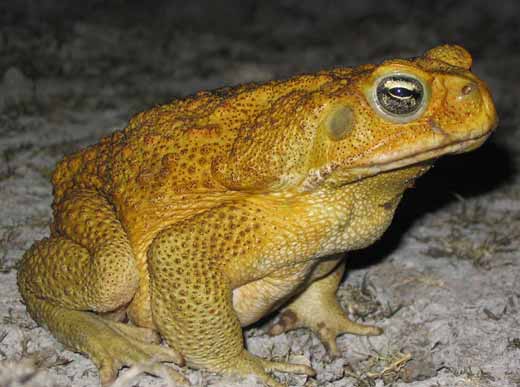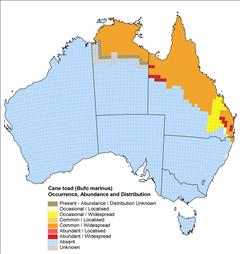The Case Studies - Cane Toads
Taxonomic Name: Bufo marinus (Synonym Chaunus marinus)
Common Names: Cane toad, Giant toad
Ecological Category: Animal
Main impacts: Environmental

Cane Toad. Image courtesy of Dr Ben Phillips
Description
Cane toads were introduced from Hawaii to Gordonvale, northern Queensland, in 1935, in an attempt to control two types of cane beetles that were pests in sugar cane crops. However, cane toads proved ineffective in controlling cane beetles and they soon established as a pest and began to spread.
Current Distribution
Since their introduction, Cane toads have rapidly spread across Queensland, into New South Wales, the Northern Territory, and most recently, Western Australia. Cane toads are now considered to occupy more than 500 000 km2 of the Australian continent (see map) and are considered as one of Australia’s most prolific pest animals.

Cante Toad Distribution
Impacts
All stages of the Cane Toad’s life cycle are poisonous (eggs, tadpoles and adults). Toxins in cane toad eggs and tadpoles cane affect native aquatic fauna. In addition, native predators that eat Cane Toads eggs, tadpoles or adults may die as a result of ingesting the toxins.
Read more about Cane toads in Kakadu in Activity 4.1.